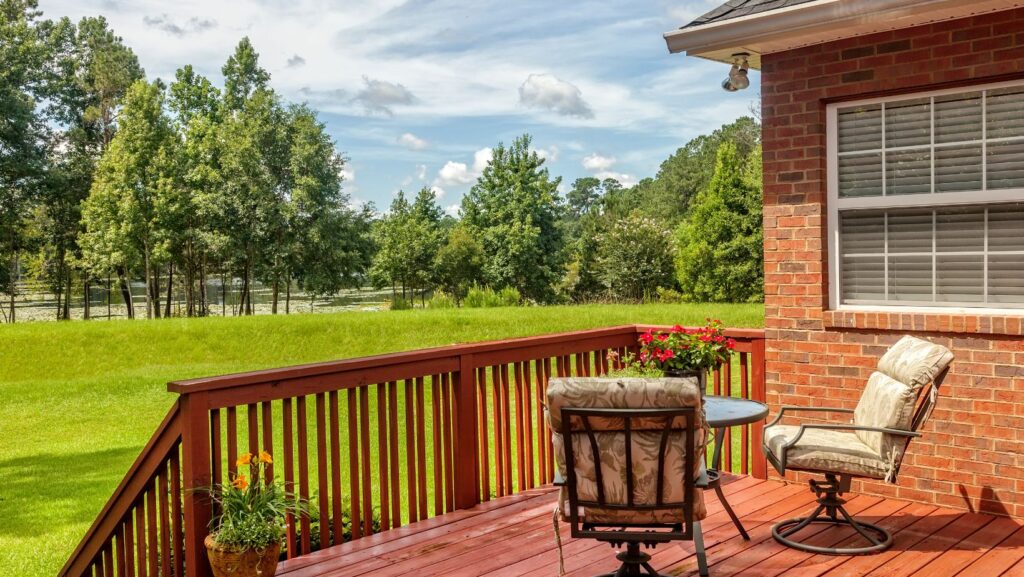
How You Can Use Color to Induce Mood in Your Residential Landscapes
How To Improve Your Garden and Yard Using Color Theory
Color theory is in itself a major force in design, which builds our perceptions and ways of interaction with the outside world. Application of color theory on a landscape makes for a creation of visual harmony and balance in a given outdoor space. It is through some general knowledge of color theory that cohesion in aesthetic form is achieved by both a homeowner and a landscaper to further beautify gardens, yards, and outdoor living spaces.
Understanding Color Theory
Color theory, in its essence, is the study of how colors interact, complement, and contrast with each other. Three basic elements in color theory are the color wheel, color harmonies, and the psychological effect of colors. The color wheel is a circle that shows how colors are related to each other. It consists of primary colors like red, blue, and yellow; secondary colors include green, orange, and purple; and tertiary colors, which one gets by mixing primary and secondary colors.
Color harmony-complementary, analogous, and triadic schemes-can give the landscaper an idea of which plants work together, along with which materials and features. Complementary colors sit opposite each other on the color wheel and are highly contrasting; analogous colors sit next to one another and give a subtle, serene effect. Triadic schemes use three colors situated evenly around the color wheel and present a balanced yet vibrant palette.
The Psychological Effects of Colors
Colors can evoke mood and, to a certain extent, dictate mood. The warm colors are the reds, oranges, and yellows and generally mean energy, warmth, and vibrancy, and hence, are very good for areas where you want to spark a lively atmosphere-in other words, patios or play areas. The colors of blues, greens, and purples are considered the cooling colors and are felt to be soothing; hence, ideal for quiet areas that you will like to retire and relax in the garden or meditation areas.
Color can also greatly impact the mood in selecting plants and hardscaping material. As an example, warm-colored flowers like marigolds and sunflowers are said to be inviting. Blue hydrangea and lavender combined make a relaxing mood.
Creating a Cohesive Color Palette
Create an outdoor color palette that presents a sense of cohesion-one that would include colors complementary with the home’s architectural style. A well-thought-out palette can help wholeness be created with the design and create harmony within a landscape-from plantings to the hardscaping.

Start with the exterior color palette of your house: siding, roofing, and architectural elements. Pull colors from those to help direct you in palette selection. If your home has more earthy tones-a beige or brown tone is up front-carry your garden to new views with a pop of deep greens and bright yellows without overwhelming it, using a complementary scheme.
Selection and Placement
Plants can be selected by bloom times, foliage color, and growth habit. A mix of perennials and annuals can offer color and interest throughout the growing season. Color theory can be applied to planting the plants such that their beauty may be accentuated, and balance maintained. For instance, tall plants of bold color are placed at the back of the flower bed, while shorter and softer colors are placed in front to give depth and visual interest.
In addition to foliage color, add texture and contrast with colorful-leafed plants long after flowers have gone, such as purple heucheras or variegated hostas. Note how colors of some trees and shrubs will change with the seasons; being prepared for that will assure color in a yard year-round.
Landscape Maintenance
Adding compact tractors to your toolkit can positively impact landscape projects in a big way. Compact tractors are very versatile machines, complemented by numerous attachments, which make them perfect for everything from ground preparation to supply transport in a job site. Smaller in size, they have the ability to maneuver around tight spaces and work in areas where larger machinery cannot, which makes them particularly useful in residential landscaping.

Design your yard with the possibilities in mind of what a compact tractor can do to simplify the work involved with tasks such as grading, tilling, and hauling mulch or dirt. Anything from efficiently hauling heavy material with a front-end loader attachment to a tiller attachment that can handle most of your garden bed preparation will save time and reduce physical exertion to free up more time for the creative side of landscaping.
Hardscaping and Color Integration
Patios, walks, and retaining walls-hard landscaping-provide the backbone to a successful color scheme in your landscape. Select materials that reflect your color palette, further reinforcing cohesive outside space. Natural stone in neutral tones, for example, will provide a backdrop on which colorful plants take center stage.
Also, add colored ornamental features to your landscape, such as garden sculptures, furniture, and cushions. These will definitely add bold splashes of color and points of focus on the landscape.
Conclusion
Incorporating color theory into landscaping is an excellent way to extend your personal style outdoors in a cohesive manner that complements the beauty of your home. Knowledge of color relationships and thoughtful psychological depth of color, wisely chosen plants and hardscaping materials will make that heaven in your outdoor space what it should be. Whether you are designing a very energetic garden or a subtle, serene landscape, there are many ways you can play with color to achieve an effect you want and make your outdoor area a true extension of your home.





